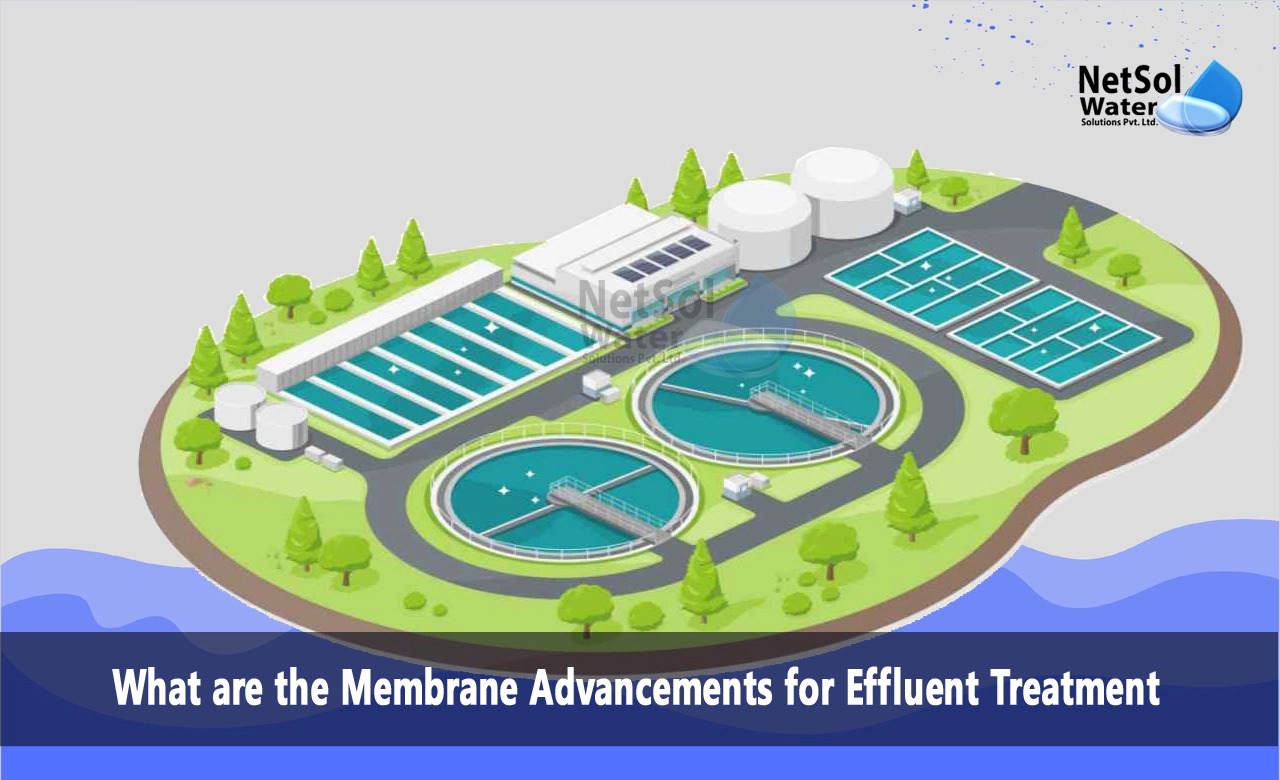What are the Membrane Advancements for Effluent Treatment?
In today's world, where environmental worries are the main concern, the legitimate treatment of effluents (fluid waste) has turned into a basic need. Membrane innovations have arisen as a promising and reasonable answer for treating different kinds of effluents, going from homegrown wastewater to industrial release. These innovations outfit the force of cutting-edge membrane filtration cycles to eliminate pollutants and filter effluents, lessening their destructive effect on the environment.
Principle of Membrane Technologies
Membrane advancements work on the guideline of specific permeability, permitting specific substances to go through while holding others. This separation cycle is accomplished using semi-penetrable membranes, which are thin barriers with microscopic pores or specialized molecular structures. The membranes go about as channels, specifically permitting the section of water atoms or explicit particles while dismissing bigger particles, microorganisms, and dissolved foreign substances.
Kinds of Membrane Advancements
There are a few kinds of membrane innovations utilized for gushing treatment, each with its own exceptional qualities and applications. Probably the most widely recognized types include:
1. Microfiltration (MF):
Microfiltration membranes have pore sizes going from 0.1 to 10 micrometers (μm), making them successful in eliminating suspended particles, bacteria, and some infections from effluents. This technology is in many cases utilized as a pre-treatment step or for explaining effluents.
2. Ultrafiltration (UF):
Ultrafiltration membranes have smaller pore sizes, regularly going from 0.01 to 0.1 μm. These membranes can actually eliminate macromolecules, colloids, and bigger dissolved organic mixtures, making them appropriate for applications like wastewater treatment and water filtration.
3. Nanofiltration (NF):
Nanofiltration membranes have pore sizes in the scope of 0.001 to 0.01 μm, permitting them to eliminate multivalent particles, dissolved organic matter, and certain micropollutants. This technology is frequently utilized for water relaxation, expulsion of divalent particles, and desalination processes.
4. Reverse Osmosis (RO):
Reverse osmosis is a highly successful membrane technology that utilizes a semi-penetrable membrane without pores, depending on the guideline of dissemination to isolate water particles from dissolved solids and foreign substances. RO membranes can eliminate essentially completely dissolved particles, atoms, and particles, making them appropriate for desalination and high level wastewater treatment.
Benefits of Membrane Advances
Membrane advancements offer a few benefits over traditional emanating treatment techniques, going with them an alluring decision for different ventures and applications:
1. High evacuation productivity: Membrane innovations are exceptionally compelling in eliminating a large number of pollutants, including suspended solids, microorganisms, dissolved organic matter, and, surprisingly, a few inorganic mixtures.
2. Compact footprint: Membrane frameworks require moderately little establishment spaces, making them reasonable for regions with restricted space accessibility.
3. Reduced chemical usage: Unlike some conventional treatment strategies, membrane advances don't depend vigorously on substance added substances, bringing about lower functional expenses and decreased environmental effect.
4. Flexibility: Membrane advancements can be applied to a different scope of effluents, from civil wastewater to modern releases, offering adaptability in their application.
5. Potential for water reuse: Treated effluents from membrane frameworks can frequently fulfill the expected quality guidelines for reuse in different applications, advancing water protection and supportability.
Applications and Businesses
Membrane innovations track down applications across a great many businesses and areas, including:
1. City wastewater treatment: Membrane bioreactors (MBRs) and membrane filtration frameworks are progressively utilized in metropolitan wastewater treatment plants to deliver excellent profluent appropriate for release or reuse.
2. Industrial effluent treatment: Different enterprises, like material, drug, food and drink, and substance producing, utilize membrane innovations to treat their effluents and meet environmental guidelines.
3. Desalination: Reverse osmosis membranes are widely utilized in desalination plants to deliver new water from seawater or saline water sources.
4. Water cleaning: Membrane advances are broadly embraced in water decontamination frameworks, including family water channels and civil water treatment plants, to eliminate pollutants and guarantee safe drinking water.
Difficulties and Future Turns of events
While membrane innovations offer various benefits, there are sure moves that should be addressed to guarantee their boundless and supportable reception:
1. Membrane fouling: Over the long run, membranes can become fouled by the collection of particles, organic matter, or mineral scale, decreasing their effectiveness and requiring occasional cleaning or substitution.
2. Energy utilization: Some membrane processes, like reverse osmosis, can be energy-concentrated, prompting higher functional expenses.
3. Concentrate removal: The concentrated waste stream created during membrane filtration processes requires legitimate removal or further treatment to limit environmental effect.
To address these difficulties, progressing innovative work endeavors are centered around growing more proficient and sturdy membrane materials, further developing membrane cleaning methods, and investigating energy-productive membrane frameworks. Moreover, the reconciliation of membrane innovations with other treatment processes, like high level oxidation or natural treatment, is being investigated to upgrade generally speaking treatment effectiveness and manageability.
Conclusion
Membrane innovations have arisen as a strong and feasible answer for effluent treatment, offering high expulsion effectiveness, flexibility, and potential for water reuse. As environmental guidelines proceed to fix and the interest for clean water builds, the reception of membrane innovations is supposed to develop across different businesses. By harnessing the power of specific permeability, these innovations give a promising way to deal with diminishing the environmental effect of effluents and promoting sustainable water management practices.
Netsol Water is Greater Noida-based leading water & wastewater treatment plant manufacturer. We are industry's most demanding company based on client review and work quality. We are known as best commercial RO plant manufacturers, industrial RO plant manufacturer, sewage treatment plant manufacturer, Water Softener Plant Manufacturers and effluent treatment plant manufacturers. Apart from this 24x7 customer support is our USP. Call on +91-9650608473, or write us at enquiry@netsolwater.com for any support, inquiry or product-purchase related query.



